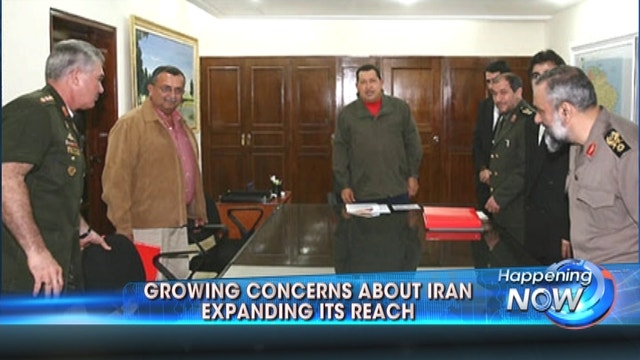Concerns about Iran's growing influence in Latin America
Congress voices concerns Iran might extend its reach into Latin America.
Washington – As the Obama administration seeks a deal with Iran on its nuclear program, new congressional testimony, documents and photos show Tehran is expanding its reach into South America by advising rogue regimes on suppressing anti-government protests and financing secretive military facilities.
Rep. Jeff Duncan, a Republican from South Carolina, cited this evidence when questioning the notion that Iran has changed its ways as President Barack Obama and his team advance negotiations which may include dropping Iran from the list of State Sponsors of Terrorism.
"We have a negotiation going on with Iran," Duncan told Fox News. "We don't want anything to interfere with that."
"And so we're going to say their influence in this hemisphere is waning," Duncan said, referring to the administration’s argument. "The narrative doesn't work when you start looking at all the pieces of the puzzle that fit together of Iran's activity in this hemisphere"
Joseph Humire, who is executive director of the Center for a Secure Free Society and who will testify before Duncan and Rep. Ileana Ros-Lehtinen's subcommittees on the Western Hemisphere as well as the Middle East and North Africa this week, says there is growing cooperation between Venezuela and Iran.
He pointed to a meeting between the Iranian commander of the notorious Basij paramilitary force, Brigadier General Mohammad Reza Nadqi, and the late Venezuelan president Hugo Chávez, believed to have taken place in 2009.
Photo courtesy Center for a Secure Free Society
Humire found evidence of striking similarities between the death of Neda Agha-Soltan -- an Iranian student protestor who became the face of the green revolution in 2009, after she was shot in the chest by the Basij militias – and the murder in February last year of a 22-year-old Venezuelan student Genesis Carmona, a former beauty queen, who was killed at the hands of pro-government civilian militias.
Genesis Carmona is driven away on a motorcycle after she was wounded during an anti-government protest in Valencia, Venezuela, Tuesday, Feb. 18, 2014. (AP)
The assessment is that Tehran advised Venezuela on the development and use of brutal civilian militias known as "colectivos" that were modelled after the Iranian Basij units.
"There's a lot of similarities in the actual results, the killings, there's also similarities in the tactics, clandestine communication techniques that these colectivos didn't have previously, espionage, intelligence, the ability to infiltrate student movements like they didn't before," Humire explained.
And Iran allegedly helped build a UAV facility in Maracay, Venezuela, with documents reviewed by Fox News suggesting potential dual use technology.
After an unexplained explosion in 2011, Humire says sections of the plant, reinforced with ceramic plates at Tehran 's insistence, were largely intact.
"I believe the Iranian UAV program is a cover for something that is more illicit," he said. "Perhaps something that's sanctioned and mostly likely involves Iran's strategic programs, its--nuclear program and ballistic missiles."
Humire found other examples, in Bolivia, with photos showing a government site, alleged to have received backing from Iran. Before 2011, it housed a UN Peacekeeping unit, but since it has been replaced by an air defense command that is heavily secured, with some areas strictly off limits.
Bolivia facility (Photo courtesy Center for a Secure Free Society)
Bolivia facility (Photo courtesy Center for a Secure Free Society)
Duncan, who authored the Countering the Iran Threat in the Western Hemisphere Act of 2012, signed by Obama, called on the State Department to assess Iranian activity, and its intentions, but the five-page unclassified report was a cursory review.
"It was a five-page report, (and) said the Iranian influence was waning,” he said. “But everyone I talked to in the intelligence community, differ from that whether it's General Kelly with SouthCOM or whether it's other independent, intelligence organizations."





